Panasonic Lumix G9 Review
Panasonic Lumix G9
Panasonic's best stills camera to date
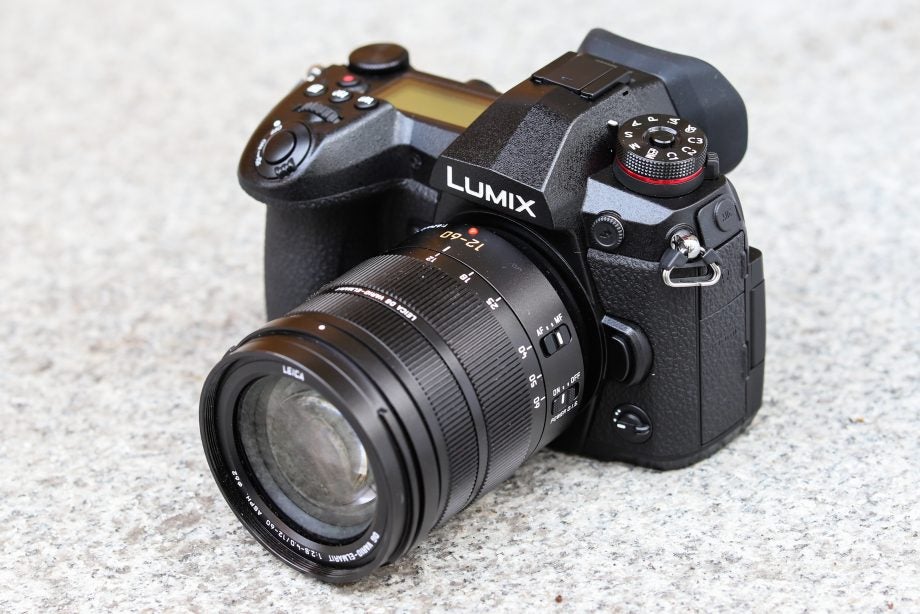
Verdict
Pros
- Superb design and handling
- Excellent 4K & 6K photo modes
- Well supported by Micro Four Thirds lenses
- Offers high-resolution 40MP & 80MP modes
Cons
- Positioning of AF toggle could be better
- Lacks battery level indication as percentage
- Burst shot mode descriptions aren’t clear
- No in-camera panoramic mode
Key Specifications
- Review Price: £1499 (body only)
- 20.3MP Micro Four Thirds Live MOS sensor
- Venus image processor
- ISO 200-25,600 expandable to ISO 100-25,600
- 12fps burst shooting (with mechanical shutter in AF-S mode) or 60fps burst shooting (with electronic shutter in AF-S mode)
- 3in, 1040-kdot vari-angle touchscreen
- 3680-kdot EVF with 0.83x magnification
- 5-axis Dual I.S II image stabiliser (effective to 6.5 stops)
- 4K video recording up to 60fps (bit-rate of 150Mbps and 4:2:0 8-bit colour output).
- USB 3.0 Micro-B and HDMI Type-A interfaces
- 4K Photo and 6K Photo modes
- 225-area AF with -4EV to 18EV detection range
- 60secs-1/8000sec (mechanical shutter) 1sec-1/32,000sec (electronic shutter)
- 200,000 shot shutter life
- 1728-zone multi-pattern metering system
- 3.5mm microphone port and 3.5mm headphone output
- Battery life: 380 shots (rear monitor), 890 shots using Power Save LVF mode
What is the Panasonic Lumix G9?
After the release of the Lumix GH5 in early 2017, there followed a quiet period where nobody knew which direction Panasonic might take with its Lumix G series. In early November, the silence was broken with the exciting news that the manufacturer was about to launch its most advanced stills camera, which would sit high above the two-year-old Lumix G7 and enthusiast-orientated Lumix G80.
The timing of the Lumix G9’s arrival couldn’t be better. Fittingly, it coincides with Panasonic’s 10-year anniversary of the Lumix G system, which is being celebrated next year.
Related: Best mirrorless cameras
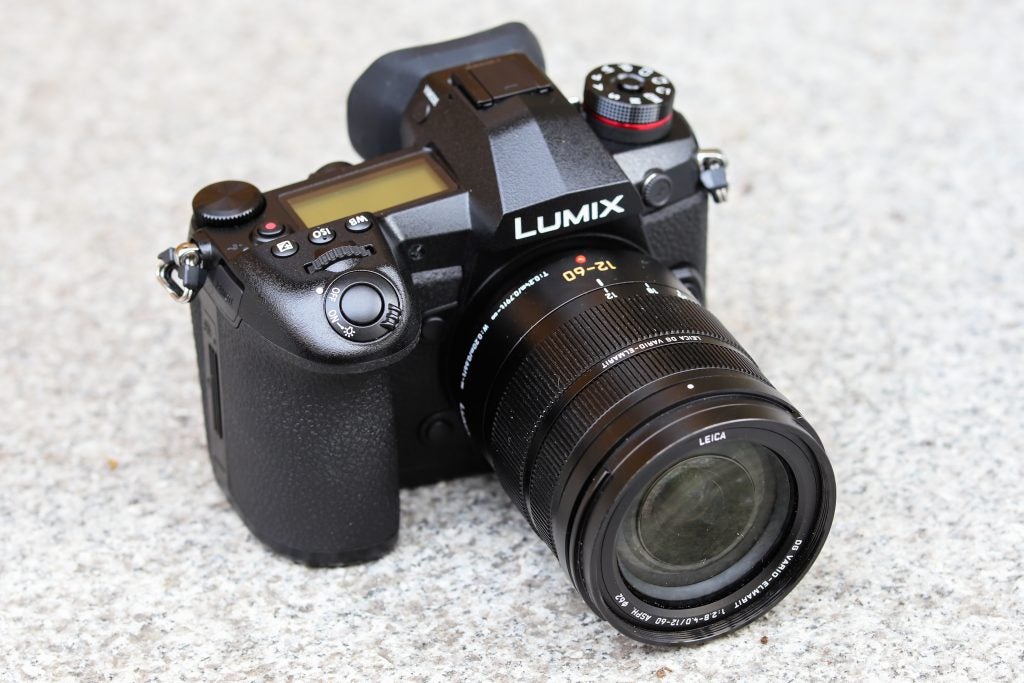
Unlike the Lumix GH5, which is highly regarded by videographers for its broadcast-standard video capabilities, the Panasonic Lumix G9 is out to fulfil the demands of serious stills-focused photographers. It positions itself beside the GH5 as Panasonic’s flagship stills camera in the G-series, and is priced at £1499 (body only) or £1670 with the Lumix G Vario 12-60mm f/3.5-5.6 ASPH OIS kit lens.
On paper, the specification looks remarkably impressive, with plenty of functionality never seen before on a Lumix G model. As well as wheting the appetite of existing G-series users, it should have strong appeal with those after a well-specified mirrorless camera under £1500.
Related: Best tripods
Panasonic Lumix G9 – Features
The Lumix G9 inherits the same 20.3-megapixel Live MOS sensor from the Lumix GH5, which looses an anti-aliasing filter in order to maximise resolution. To create what’s been claimed as the highest ever picture quality produced from a Lumix G camera, several changes have been made to the processing algorithms to increase resolution and deliver a 25% improvement in dynamic range.
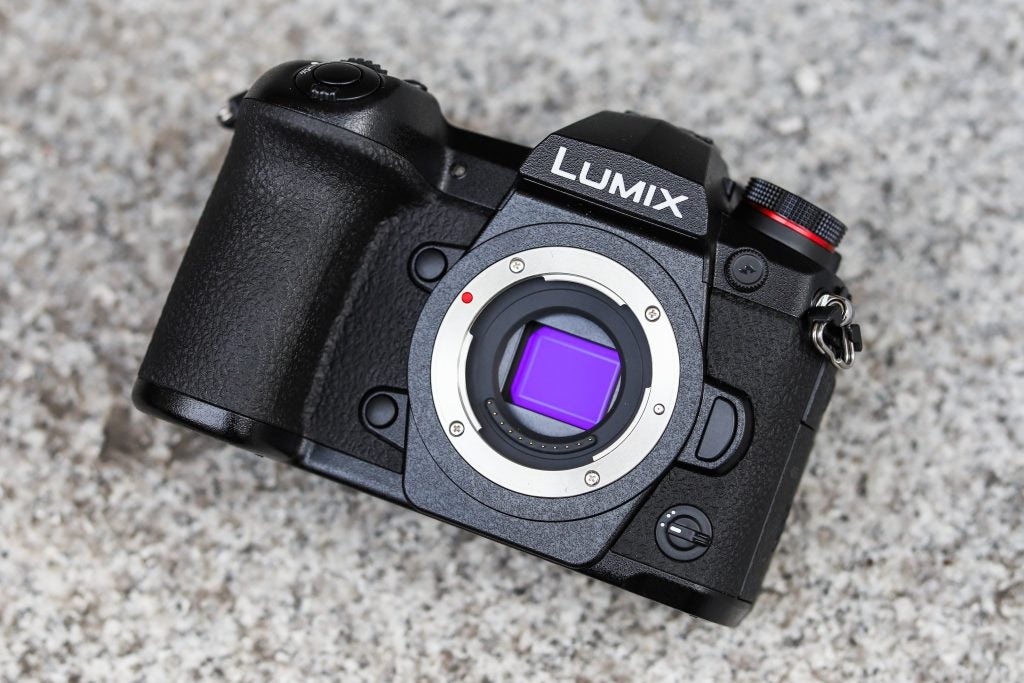
Like the GH5, the ISO range spans from ISO 200 to 25,600, with an extended lower setting of ISO 100. Shutter speeds range from 60 seconds to 1/8000sec using the mechanical focal-plane shutter, or 60 seconds to 1/32,000sec using the electronic shutter. The advantage of using the electronic shutter is that the camera operates silently. However, there is the risk of distortion when shooting moving subjects due to the rolling shutter effect.
Pairing the G9’s sensor with a new Venus image processor has allowed the G9 to reach new heights in terms of speed. When shooting continuously in its AF-S mode, the G9 can rattle out a burst at 12fps for as many as 60 frames in Raw, or at 60fps for 50 frames in Raw by activating the camera’s electronic shutter. Switching the camera over to its continuous AF mode (AF-C) sees the burst speed drop, but to a highly respectable 9fps using the mechanical shutter or 20fps using the electronic shutter.
Once again, Panasonic has relied on its formula of contrast detection and Depth From Defocus (DFD) technology for focusing. The G9 is capable of acquiring focus as quickly as 0.04 seconds, which is 0.01 second faster than the Lumix GH5.
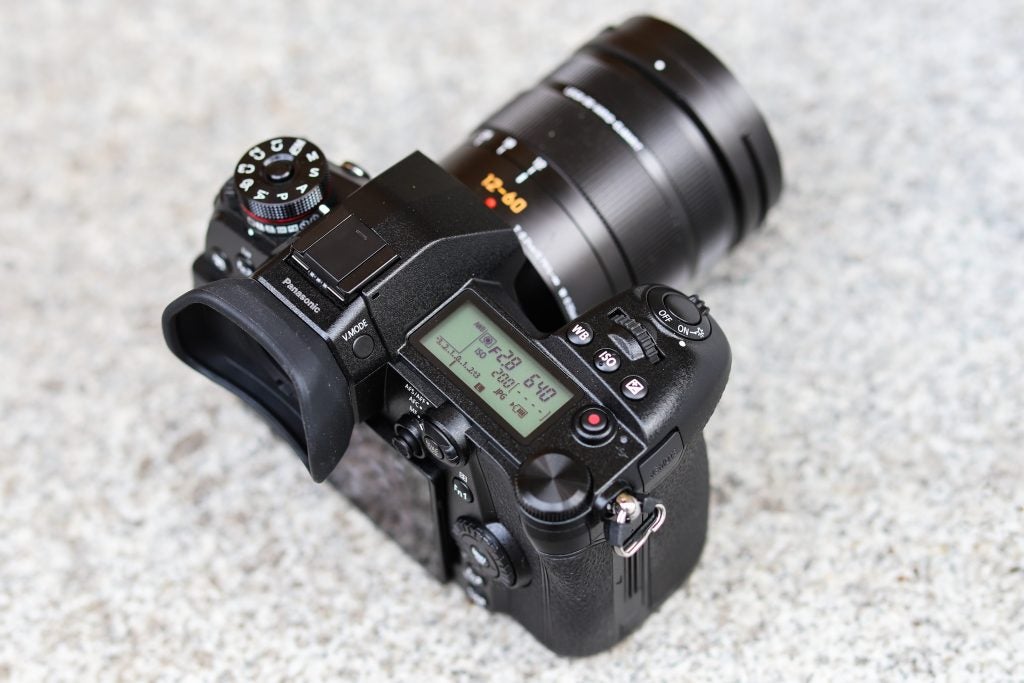
The working range of the AF system spans from -4EV to 18EV, and in addition to the above there are three new AF modes. AF-point scope is designed to enlarge the subject temporarily to confirm the focus position, whereas focus switching clearly specifies the AF area position on the setting screen. The other new AF mode – loop movement – allows the AF point to be moved from one side of the frame to the other more easily.
If this wasn’t enough, the G9 presents four AF case settings to choose from. These can be fine-tuned to adjust AF Sensitivity, AF Area Switching Sensitivity and Moving Object Prediction, depending on the type of scene or subject you’re shooting.
Exposure modes include the standard PASM quartet, backed up by Panasonic’s Intelligent Auto mode for point-and-shoot duties. There are 22 creative digital filters, plus three Custom settings that can be set up as you want. Surprisingly, though, there’s no in-camera panoramic mode as seen before on other Panasonic cameras.
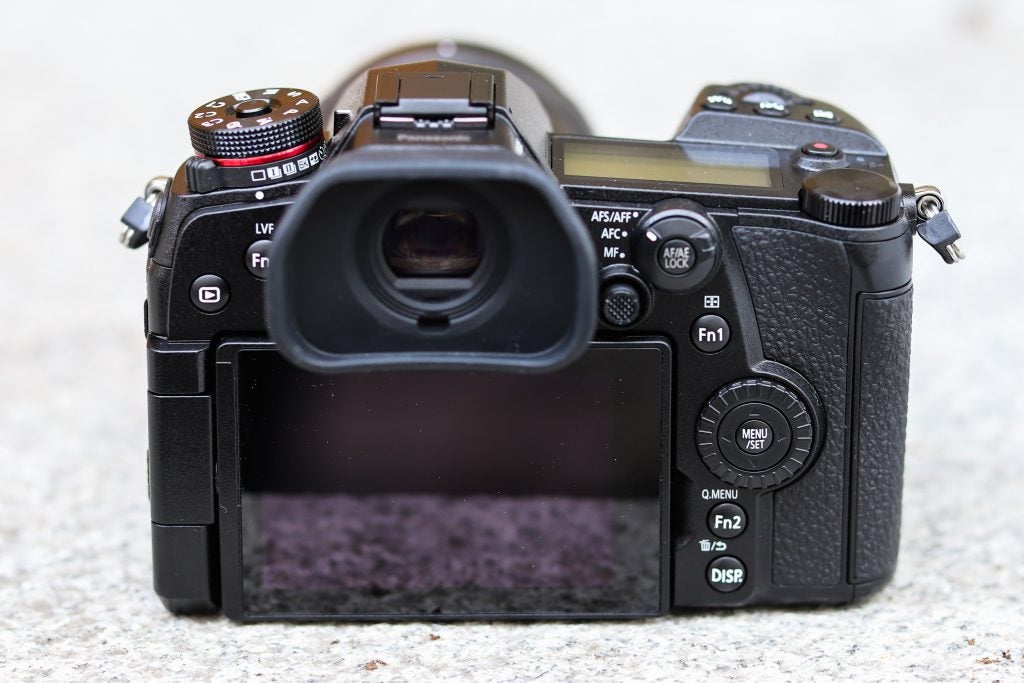
One of the key features yet to be mentioned is the G9’s new 5-axis Dual I.S II image stabiliser, which offers 6.5 stops of compensation to counteract camera shake when shooting stills or movies. It works just like the GH5 in the way it combines 2-axis stabilisation from the lens with 5-axis stabilisation in the camera. However, not every Leica DG or Lumix G lens is supported by this latest IS system, and some lenses will require a firmware update to make them compatible.
The G9’s new IS system is also dual-purpose in the way it allows the camera to offer a new 80-megapixel high-resolution mode, whereby the sensor is shifted precisely between eight shots to create a single image with much finer detail. I’ll touch on how effective it is in use later, but because of the short delay between frames, it’s most effective when shooting stationary subjects and scenes where movement isn’t at risk of being rendered blurred.
As to be expected, the G9 presents an excellent video specification. It can record 4K video (3840 x 2160) at up to 60fps, with a bit-rate of 150Mbps and 4:2:0 8-bit colour output. Slow motion footage can be shot at up to 180fps at Full HD quality, and Panasonic’s 6K Photo and 4K Photo modes filter down from the GH5. This allows users to extract 8-megapixel stills from 4K footage at 60fps, or 18-megapixel stills from 6K video at 30fps.
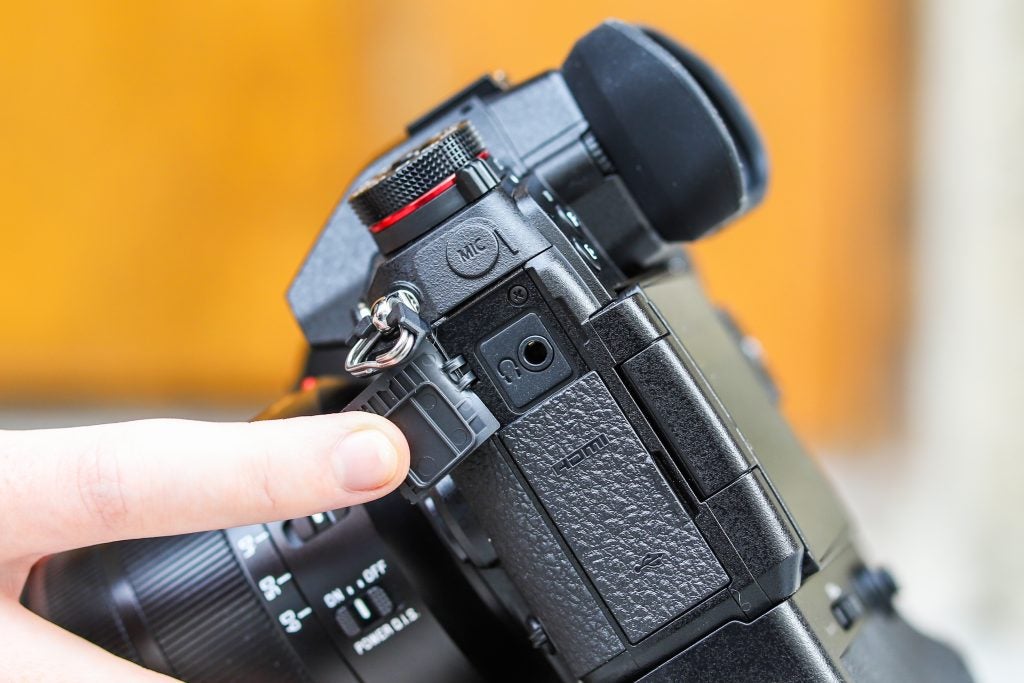
Above the G9’s USB 3.0 Micro-B and HDMI Type-A interfaces, you’ll find a 3.5mm microphone port and 3.5mm headphone socket behind their own rubberised flaps.
Panasonic’s new power-saving LVF shooting mode promises up to 890 shots per charge from the same DMW-BLF19E battery the GH5 uses. With this economy mode switched off, average battery life is expected to be around 380 shots.
The G9’s dual-card slots are both UHS-II compatible to handle the high data rates required. Plus, there are Bluetooth and Wi-Fi connectivity options to easily pair and transmit images to mobile devices running Panasonic’s sophisticated Image app.
Panasonic Lumix G9 – Body and design
The G9 has a larger footprint than both the Lumix G7 and G80, and it’s less stocky-looking than the GH5. Making a camera too small can have a detrimental affect to the handling experience, so Panasonic has avoided this by making the G9 around the same size of an enthusiast-grade DSLR.
With its deep ergonomic handgrip it offers ample space for those with large fingers to wrap their hand around it, leaving the index finger to rest comfortably on the slanted shutter button. This is now united with the on/off switch, rather than being offset from the mode dial.
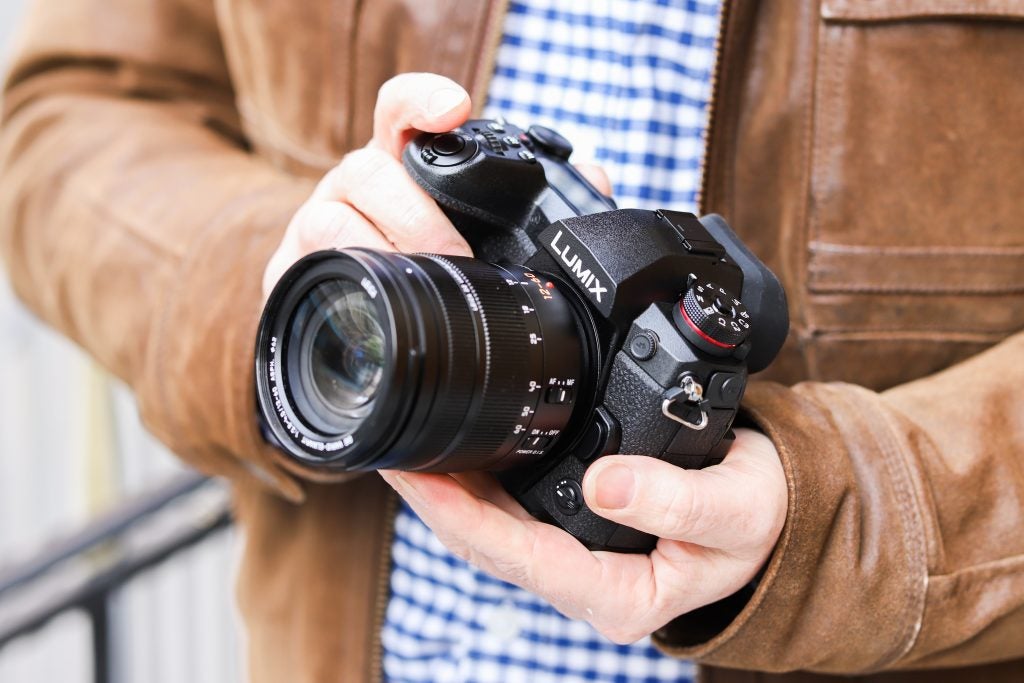
The rubberised skin right around the handgrip prevents the device slipping in your hands when they’re wet. The camera doesn’t have weather-sealed status, but sections of the body are tightly sealed to ensure it can survive extreme conditions and provide protection against minimal moisture, water or dust. Anyone planning to shoot in cold climates will be fine, provided it isn’t used below -10°C.
Underneath its skin, the G9 is built around a strong magnesium alloy chassis, which is different to the G80’s magnesium alloy front-plate and plastic top-plate design. On picking it up, you immediately sense that its build quality is superior. Not only does it feel less plasticky, the buttons and dials are better made, with the latter protruding from the body rather than sitting flush.
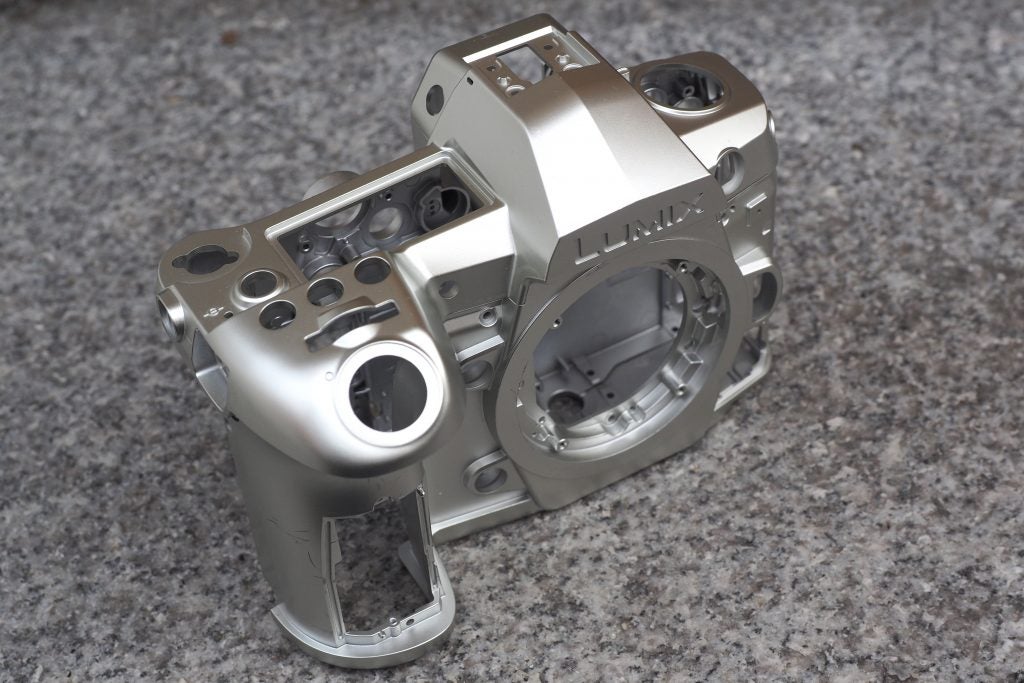
All the dials rotate positively, with the rear dial combining well with the exposure compensation, ISO and white balance buttons when shooting and scrolling through shots in playback mode.
The G9 shares a likeness to enthusiast DSLRs, not just in its size but also in the design of its top plate. On the left you get a lockable mode dial with a drive mode switch beneath. There’s the option of allocating two burst settings to drive mode I or II, and if you go beyond self timer mode then you’ll come across options to create a time-lapse or stop-motion animation in-camera.
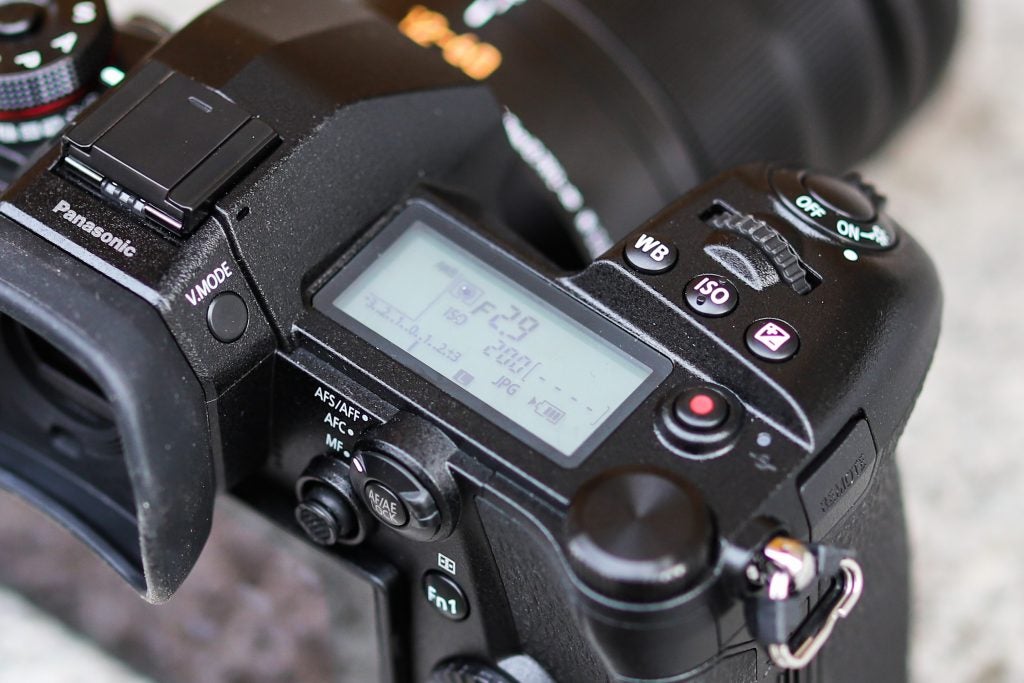
Another excellent addition is the G9’s large top-plate display, which is a helpful for glancing at key settings. It saves being totally reliant on the rear screen or EVF.
Studying the body from the front, you’ll notice two function buttons (Fn4 and Fn5) beside the lens mount. In total, the G9 offers ten customisable functions buttons. Five of these are issued to the touchscreen, the other three are located at the rear.
Another useful feature is the Fn lever, which is located beneath the lens release button. This can be setup to customise the camera for different types of shooting scenarios, and from the menu you’re given the option to change variables such as AF mode, photo style, image quality, self-timer, shutter type and focus peaking. It’s a slightly different approach to the G9’s custom modes.
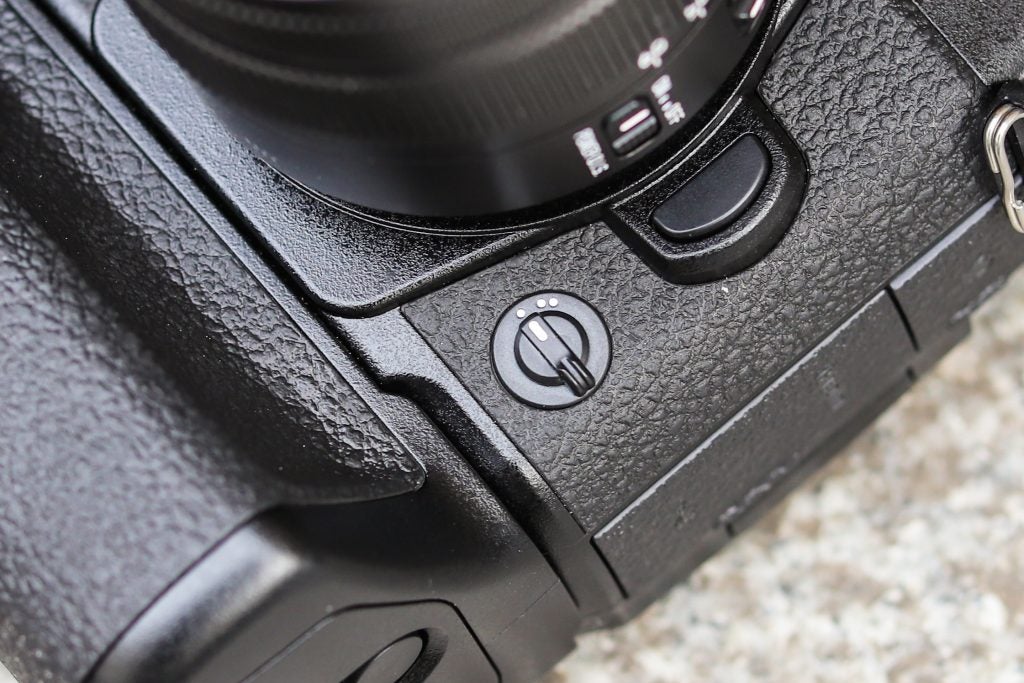
Other noteworthy controls include the joystick at the back, just to right of the EVF, which is used to control the active AF point(s). As good as it is to have for intuitively nudging the AF point(s) around the frame, it feels too far positioned to the left. In hindsight I’d have liked it to exchange position with the combined AF/AE lock button and AFS/AFC switch.
The G9’s in-camera menu has also also been brought up to date, with the addition of a My Menu tab that allows you to set it up as you want for quick access to your most commonly used settings.
Panasonic Lumix G9 – 4K and 6K photo modes
The Lumix G9 advances a long way from the Lumix G7 and G80 in the way it allows users to capture definitive moments using its offshoot photo modes.
Whereas in the past it was possible to extract 8-megapixel stills from 4K footage at 30fps, there’s now the option to extract 18-megapixel still images from 6K footage at 30fps like the Lumix GH5. Alternatively, 8-megapixel stills can be pulled out from 4K footage at 60fps, with 8-megapixel stills from 4K at 30fps still being made available.
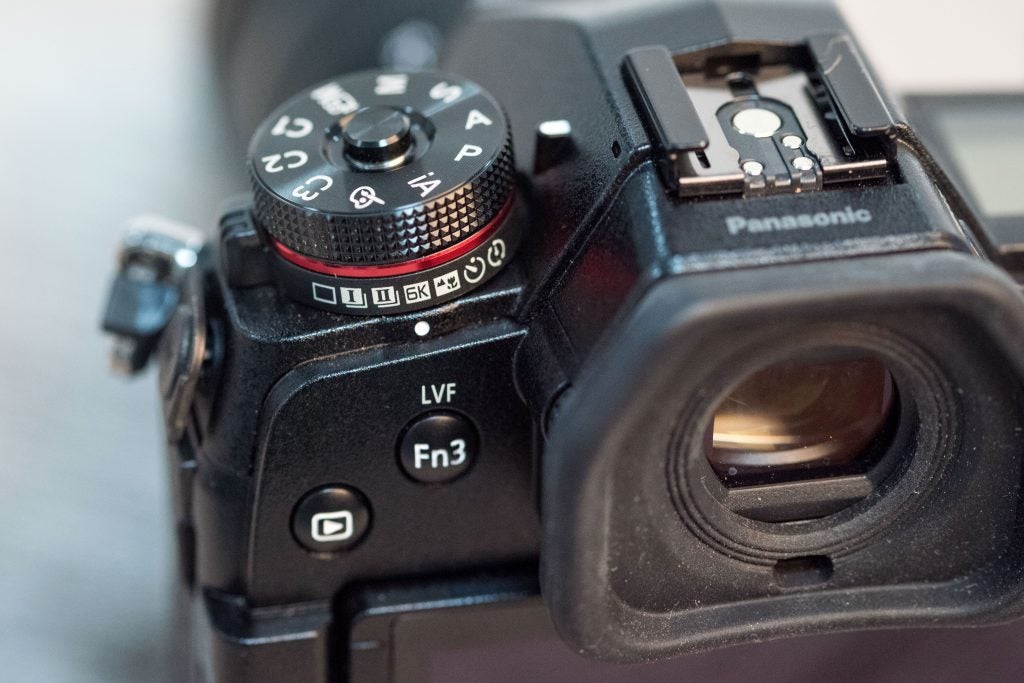
Rotating the drive mode dial to 6K and entering the quick menu presents all of the G9’s 6K and 4K Photo mode options. From here you can choose from three photo functions (6K/4K burst shooting, 6K/4K burst (Start/Stop) and 6K/4K Pre-burst), which are all designed to make it easier to capture an image at the perfect time.
6K burst shooting lets you shoot 10 minutes of continuous footage at 30fps, which can be used just like a photo burst mode by holding the shutter down. 6K burst (Start/Stop) mode starts shooting with a single press of a shutter button and stops with a second press, making it better suited to shooting opportunities that require a longer waiting time.
As for the 6K Pre-Burst function, this is aimed at those who’d like the camera to automatically record one second’s worth of footage before and after the shutter is depressed. This could be the difference between capturing a moment and missing it altogether.
Panasonic Lumix G9 – Viewfinder and screen
The quality of electronic viewfinders are improving all the time and the G9’s EVF is an example of one of the best there is at the time of writing. Not only does it offer an impressive 3680-kdot resolution, it has a large 0.83x magnification, which is larger than you get on many full-frame DSLRs, and many of its rivals at similar price.
A large rubber eyepiece cushions it comfortably against your eye and the Disp. button can be used to view shooting information, including an electronic level and histogram. The resolution of the EVF is so good, I often found myself using it to inspect images in sunlight where reflections made it hard to review shots clearly on the screen.
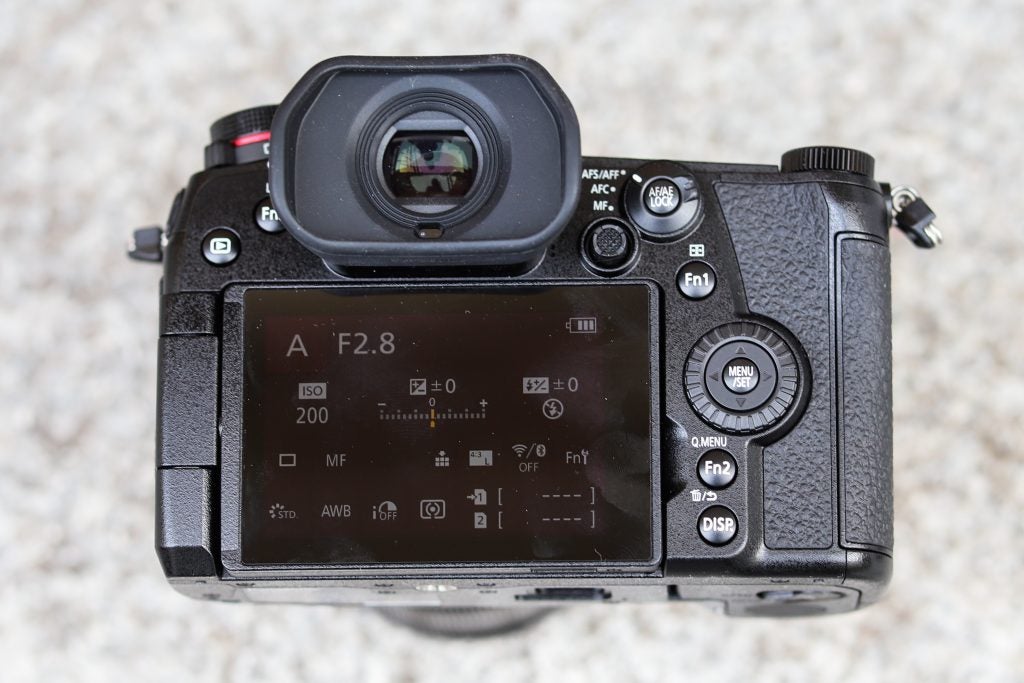
The display speed of the EVF is set to 60fps as default, presumably in an effort to preserve battery consumption. There’s the option of changing this to 120fps with a refresh rate of less than 0.005 seconds from the menu.
Importantly, there’s no viewfinder blackout beyond the first frame during a continuous high-speed burst, making it easy to track subjects rather than guess their trajectory. Interestingly, the magnification of the EVF can also be switched to 0.77x or 0.7x – a useful option for wearers of glasses who might find it easier to view the edge of the frame, which is depicted by a white border.
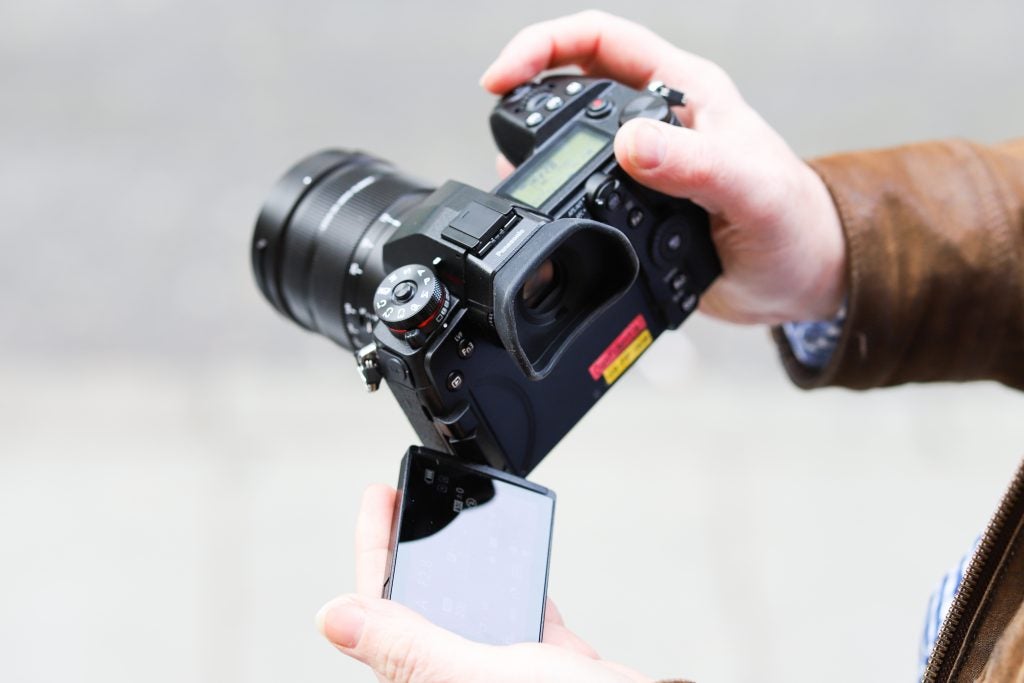
The G9’s 3-inch, 1040-kdot vari-angle screen is different to the 3.2-inch, 1.62-mdot vari-angle screen on the GH5. However, its functionality is much same and offers an alternative way of navigating the menu, setting the focus point and firing the shutter.
It pulls out effortlessly, rotates freely, and can be flipped in on itself to prevent it becoming scratched when not in use. If you find the screen feed disappears suddenly, it’s most likely because the EVF eye sensor has been triggered. To prevent abrupt interruptions, users may wish to turn the LVF/MON Auto setting off, which is easily done using the Fn3 button.
Panasonic Lumix G9 – Autofocus
With other high-end mirrorless cameras putting in blisteringly fast AF performances of late, the G9 has a lot to live up to. The good news is that its autofocus performance is very spritely indeed, to the point it’s capable of acquiring focus as fast as 0.04 seconds. In real-world use, though, it’s difficult to tell that it’s 0.01 seconds faster than the GH5.
In bright lighting conditions where there’s ample contrast, users can rest assured in the knowledge that the G9 is up to the task of acquiring focus in a split second with very little fuss. It was only when I pushed the focusing system to the extremes in very poor lighting conditions that it showed any hesitancy before the AF point turned green to confirm focus had been achieved.
In one such situation where the subject was too far away to be illuminated by the G9’s orange AF assist beam, I opted to manually focus and was greeted by an array of focus aids after twisting the manual focus ring.
The basic focus distance scale and peaking displays are good options to have, but I discovered the magnified view that lets you inspect focus at up to 10x magnification most useful. It will benefit those who want to be extremely precise with manual focusing such as macro specialists.
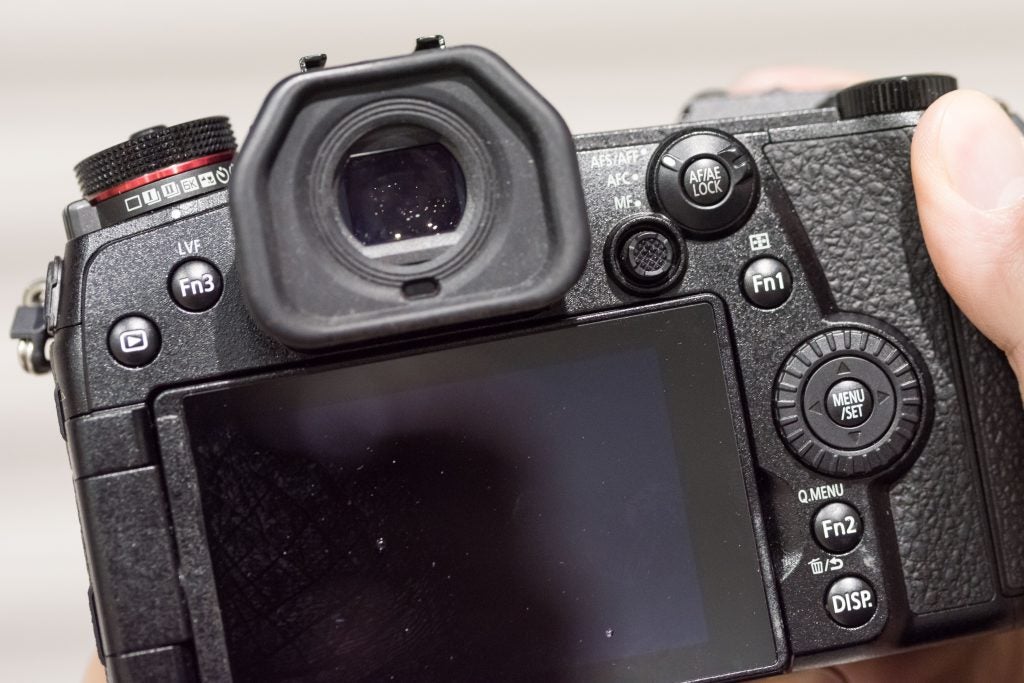
Like previous G-series models, the AF mode is changed between single (AFS/AFF) and continuous (AFC) using the switch that encircles the AF/AE lock button, with the Fn1 button loading the G9’s plethora of six AF modes. There’s pinpoint AF for super-precise focusing, face/eye detection, tracking and 225-area AF for those who’d like the camera to automatically detect the best AF points to use within a selectable grid.
The G9’s 1-area AF mode lets users define the position of the AF point in up to eight sizes, while custom-multi is great to use for fast subjects in combination with AFC mode. It’s like zone AF in the way you can specify the number of grouped AF points, with the option to change a diamond formation for a horizontal or vertical pattern and save up to three frequently used areas.
Panasonic Lumix G9 – Performance
To give the G9 the test it deserved, I took it on a trip to South Africa, where I used it to shoot an array of subjects from animals in the wild to dramatic landscapes and portraits of local people. The G9’s hasty shooting speeds, effective stabilisation and rapid focusing unite remarkably well. However, I did notice a couple of minor bugbears early on during testing.
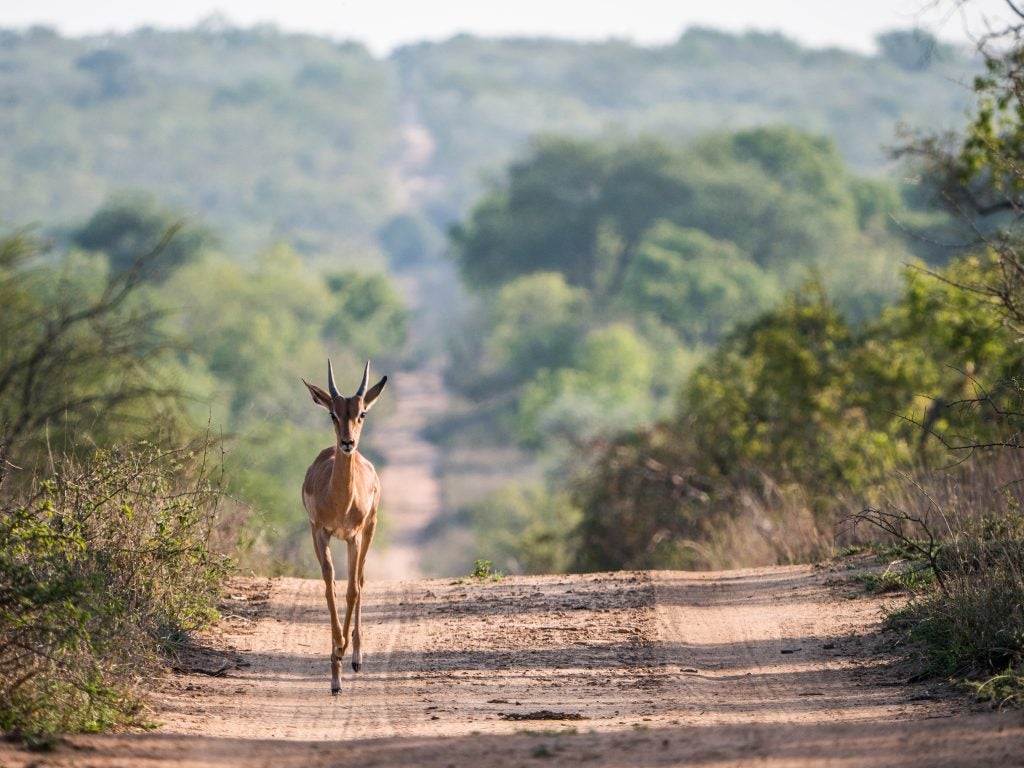
Panasonic Leica DG Vario-Elmar 100-400mm f/4.0-6.3 ASPH , 1/800sec at f/6.3, ISO 400
Having the option of flicking between two burst modes from the drive mode dial is an excellent idea. However, the camera fails to clearly show how many frames per second the camera shoots at in each mode, and is something I’d like to see rectified with a future firmware update.
Other early observations included the shutter button requiring the lightest of presses beyond a halfway press to take a shot; and the battery indicator showing only four bars and not displaying remaining power as a percentage, neither on the shooting screen nor from the menu.
These minor points aside, the G9 is an extremely enjoyable camera to shoot with. It offers all the buttons and dials you need to set it up as you want, without feeling too challenging or difficult to navigate. There’s a lot in the menu to get your head around, but you’ll find it’s well laid out and nicely colour-coded.

Panasonic Leica DG Elmarit 200mm f/2.8 Power O.I.S, with DMW-TC14 1.4x teleconverter, 1/800sec at f/4, ISO 800
The quick menu combines superbly with the touchscreen to offer immediate control of commonly used settings, while the LCD panel on the top plate is just as informative as the type you’d find on enthusiast and pro DSLRs. The only omission is a small icon to show when the camera is set to continuous shooting – and, again, I wouldn’t have been opposed to it showing the frame per second rate it’s set to shoot at.
Having the option to set the shutter speed up to 1/32,000sec while firing the shutter silently proved invaluable for photographing wildlife with fast lenses in extremely bright conditions. The battery grip (BMW-BGG9E) and second media slot allowed me to shoot all day without interruption. However, in hindsight I feel the grip could have been designed slightly better to accept a pair of batteries and supporting plug-in charging, which is something Fujifilm has achieved with its excellent Power Booster for the X-T2.
It isn’t just the continuous speeds at which the G9 shoots at that make a serious impression; the way it handles and processes such high volumes of data so quickly must be commended too. This is no better experienced than using its high-resolution mode, where you can create a 40-megapixel or 80.5-megapixel file whilst simultaneously recording a normal image in the Raw or JPEG formats.
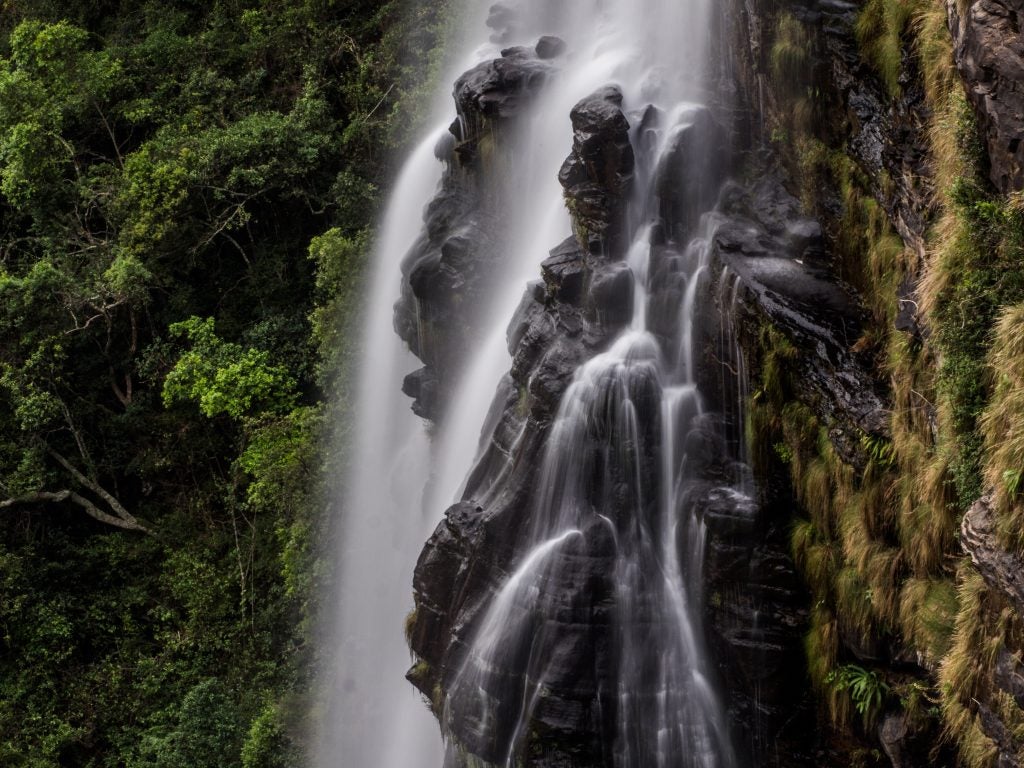
Panasonic Leica DG Elmarit 200mm f/2.8 Power O.I.S, with DMW-TC14 1.4x teleconverter, 1sec at f/22, ISO 100
It goes without saying that the camera needs to be locked off on a tripod to achieve the best results in high-resolution mode. To help minimise blur caused by nudging the camera accidentally, users will find nine different settings (1/8sec to 30secs) to delay the recording process.
With a fast shutter speed, it takes less than five seconds for the camera to capture its eight consecutive shots and merge the recorded image data into one high-resolution image. This is astonishingly quick, and as is the case when using the 4K/6K Photo modes, an icon appears on the image in playback to show that it was taken in high-res mode. Panasonic has executed its high-res mode extremely well, making it both effectively quick and simple to use.

Panasonic Lumix G Vario 7-14mm f/4 ASPH, 1/1000sec at f/5, ISO 400
The G9 does an admirable job of exposing for different scenes, although I did reach for the exposure compensation button now and again to dial in around -1EV to ensure the highlights were protected in high-contrast scenes. Provided you shoot in Raw, you can pull back a plausible level of detail from shadowed regions without introducing too much noise.
Panasonic’s rendition of colour has always swayed to being quite cool, so it’s refreshing to see that this has been looked at on the G9 following feedback from GH5 customers. The result is an ever so slightly warmer feel to shots captured in its Auto White Balance (AWB) mode, with the option to set it to a AWBc setting if a cooler result is preferred.

Panasonic Leica DG Elmarit 200mm f/2.8 Power O.I.S, with DMW-TC14 1.4x teleconverter, 1/2000sec at f/4, ISO 400
The standard picture style is generally faithful, but those who fancy adding a bit more punch to colour or mono shots straight out of the camera will want to increase the contrast and colour tone sliders a touch. It should also be mentioned that colour is well matched between the screen and EVF, meaning you get an accurate impression of the final image with whichever you’re likely to use most.
Panasonic Lumix G9 – Image quality
Although Micro Four Thirds sensors are prone to showing more noise at high sensitivities than their APS-C rivals, the G9 is capable of producing very clean images with strong levels of detail. In addition, it controls noise particularly well between its extended ISO 100 setting and ISO 800.
In low-light scenarios I didn’t hesitate using ISO 1600 and ISO 3200, with ISO 6400 being my cut off point when using the camera in its Auto ISO mode.
The improvements Panasonic’s engineers have made to the imaging algorithms squeezes the best out of what the 20.3-megapixel sensor has to offer. Resolution figures show it’s capable of resolving above 3000l/ph up to ISO 3200.
Resolution
A close examination of the G9’s Raw files shows that its 20-megapixel sensor provides a maximum resolution of around 3300 lines per picture height at ISO 100, which is a respectable result. This figure gradually drops as the ISO sensitivity is raised, and noise has an increased impact on the image.
Pushing beyond ISO 800 sees the resolution reduce to 3000lph at ISO 1600 and 2800lph at ISO 6400. These figures are identical to those previously recorded by the Olympus OM-D E-M1 Mark II’s 20MP Micro Four Thirds sensor. At its highest ISO 25,600 setting, the G9 registers 2400l/ph.
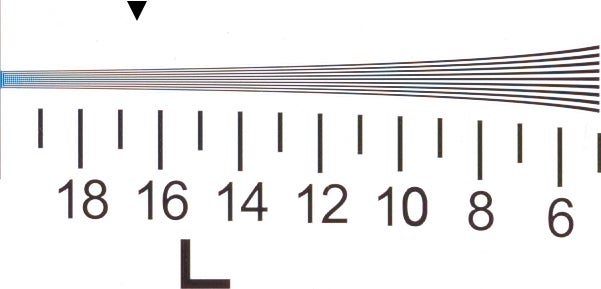
Panasonic Lumix G9, Raw, ISO 100. Multiply the number below the line by 200 for the resolution in lines/picture height
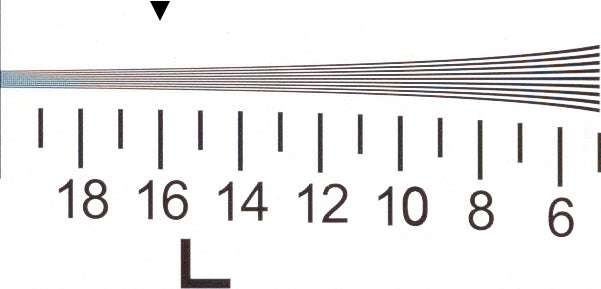
Panasonic Lumix G9, Raw, ISO 800. Multiply the number below the line by 200 for the resolution in lines/picture height
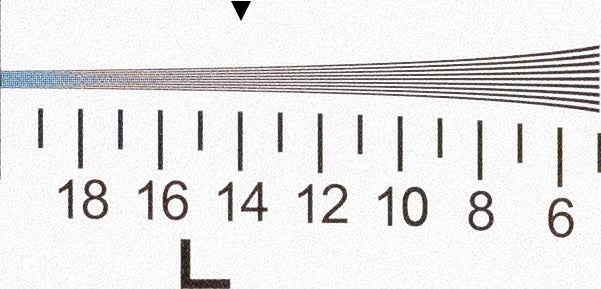
Panasonic Lumix G9, Raw, ISO 6400. Multiply the number below the line by 200 for the resolution in lines/picture height
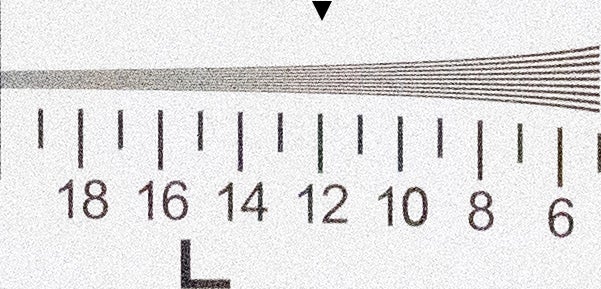
Panasonic Lumix G9, Raw, ISO 25600. Multiply the number below the line by 200 for the resolution in lines/picture height
Noise
I noticed the G9’s automated in-camera noise reduction impinges on extremely fine detail being resolved in JPEGs images beyond ISO 400. To achieve the finest results at high sensitivity settings, setting the camera to shoot in the Raw format is an absolute must.
Luminance noise starts to make itself known at ISO 800, but detail is well preserved at this setting. A slight reduction in detail is obvious at ISO 1600 and ISO 3200, with increased noise being observed in the latter.
I’d be content shooting at ISO 3200, pushing as far as ISO 6400 if I had to in a very low-light situation, but both these settings do benefit from noise reduction being applied during the post-processing stage. ISO 12,800 and ISO 25,600 give poor results, so if you shoot regularly in very low light then buying a camera with a larger APS-C or full-frame sensor would make more sense.
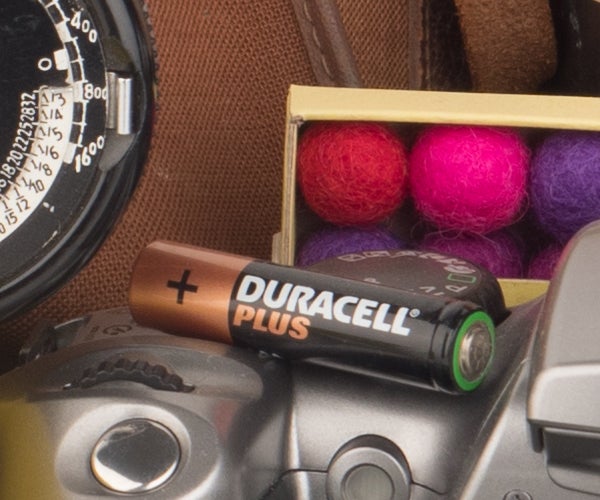
Panasonic Lumix G9, Raw, ISO 100
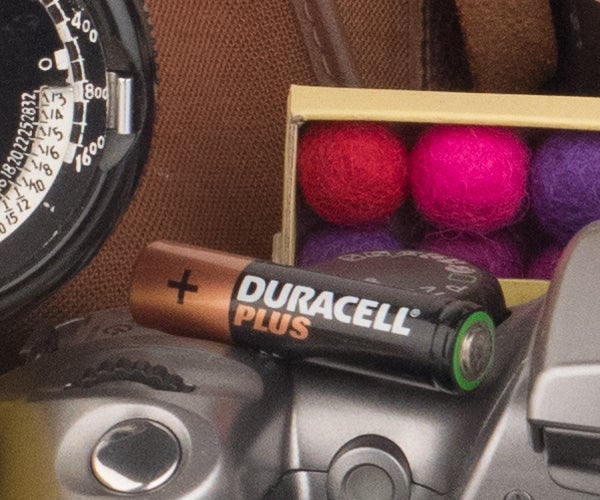
Panasonic Lumix G9, Raw, ISO 800
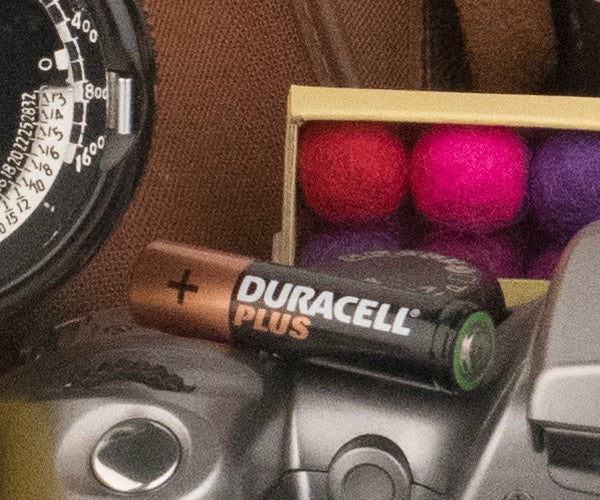
Panasonic Lumix G9, Raw, ISO 3200
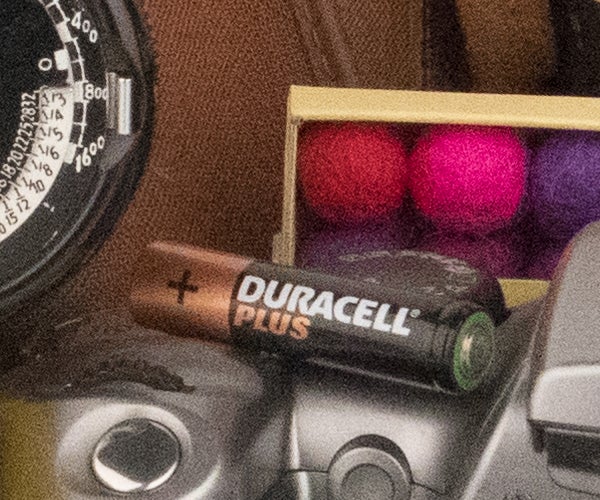
Panasonic Lumix G9, Raw, ISO 6400
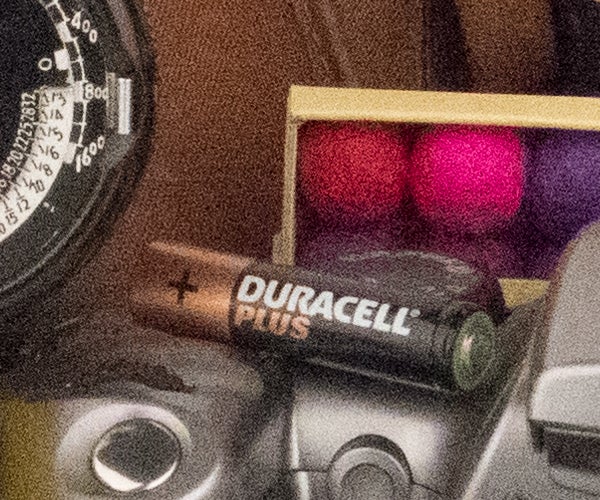
Panasonic Lumix G9, Raw, ISO 12800
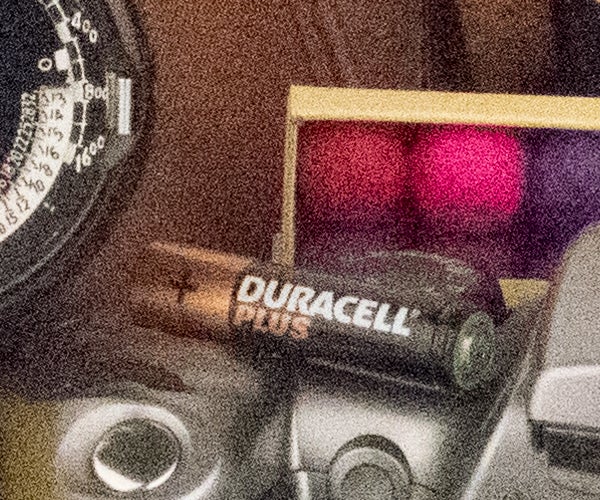
Panasonic Lumix G9, Raw, ISO 25600
Why buy the Panasonic Lumix G9?
Panasonic might not be the first camera manufacturer you’d associate with producing the best purists camera, partly because in years gone by it’s become well known for its excellent travel compacts and high-end, video-focused models.
The Lumix G9 is, by some margin, the finest stills camera the manufacturer has ever produced – and it’s exceeded all expectations and then some during challenging and demanding tests. Okay, it doesn’t feel quite as refined as a professional mirrorless camera, and there are some areas of its body where I’d have liked to have seen metal used as opposed to plastic. Nevertheless, the general feel is excellent and it gives the sense you’re holding onto an enthusiast DSLR stripped of its bulkiness and weight.
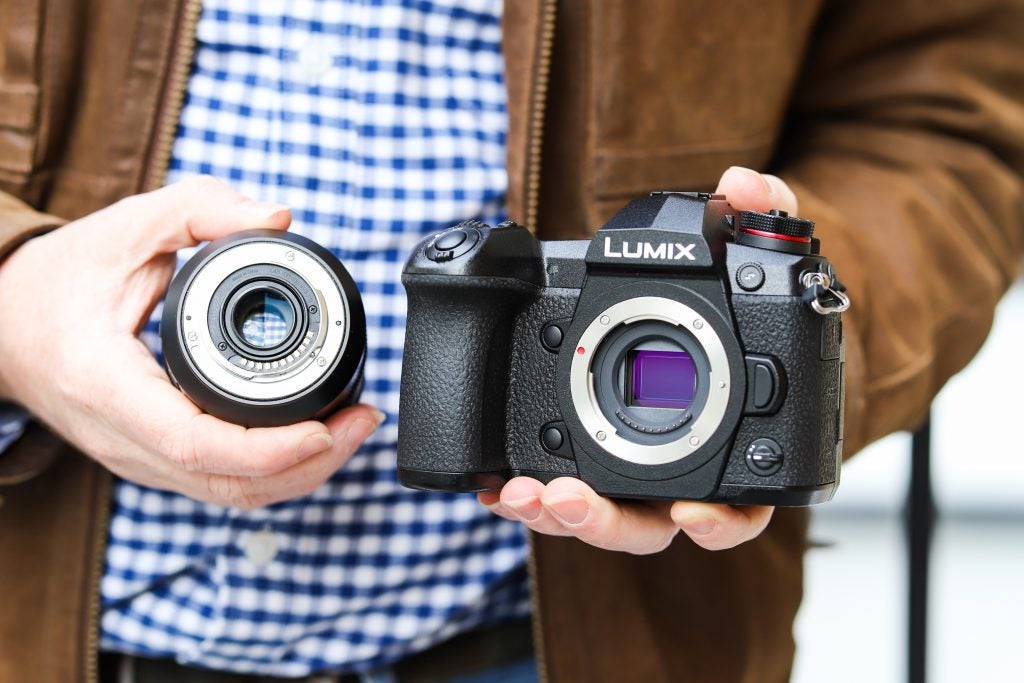
It withstood some serious knocks and abuse on safari, and backs up its sturdiness with a splendid offering of high-speed shooting, fast focusing, rapid processing and effective in-body stabilisation. It’s the fastest, most affordable mirrorless camera on the market at present. Only the professional Sony A9 (£4449) can match its blazing 20fps with continuous AF offering, and that comes with a very hefty premium.
The G9 is more than just a master of speed. Like many cameras we’ve seen of late, it sells itself on being highly versatile for all subjects and is supported by a vast selection of Micro Four Thirds lenses for which there’s a lens for any imaginable purpose.
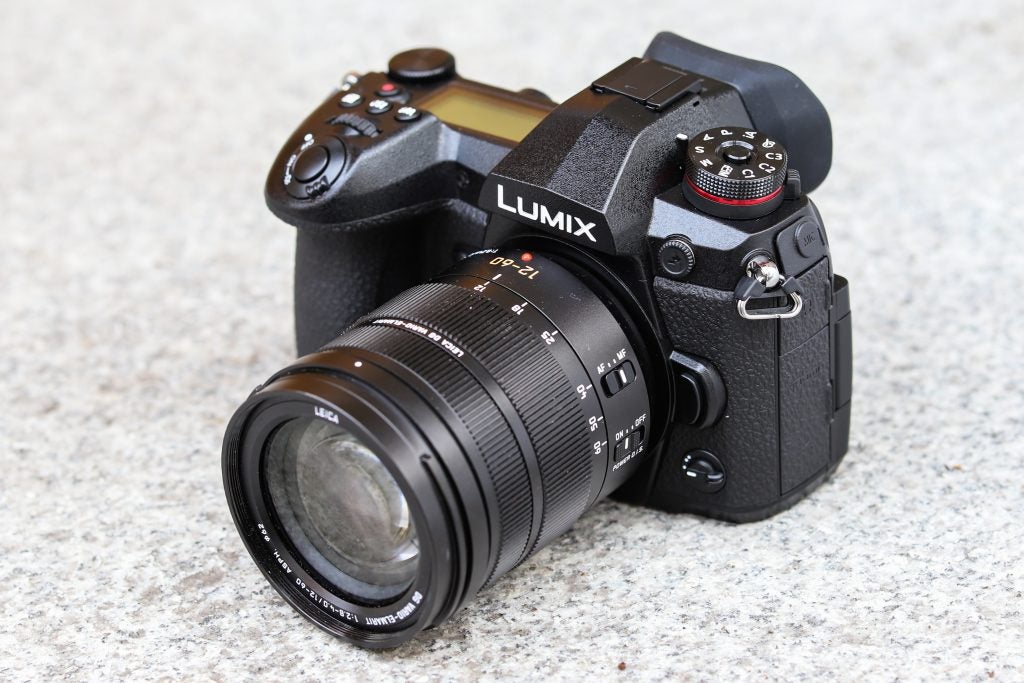
Of course, there’s still the question of noise, with the smaller Micro Four Thirds sensor having its work cut out to rival its APS-C competition. However, provided it’s used within its limitations and isn’t pushed to the extremes of its sensitivity range, the G9 is more than capable of delivering satisfying results in the hands of those who love photography.
Overall, Panasonic has done a sterling job with the Lumix G9 and has launched it at a competitive price that represents good value for money. With so much to like and so little to fault, it’s hard to think of a reason why anyone after an insanely fast, lightweight and versatile camera working to a £1500 budget wouldn’t seriously consider the Panasonic Lumix G9.
Verdict
Panasonic’s best stills camera to date. The Lumix G9 is a sound mirrorless camera boasting a speedy specification, which it backs up with an admirable performance out in the field.
Trusted Score
Features
| Camera type | Micro Four Thirds |
| Megapixels (Megapixel) | 20.3MP |
| Image Sensor | Micro Four Thirds Live MOS sensor |
| Shutter speed | 60secs-1/8000sec (mechanical shutter), 1sec-1/32,000sec (electronic shutter) |
| Auto focus | Contrast AF system with DFD |
| Max output resolution | 5184x3888 pixels |
| Exposure metering | 1728-zone multi-pattern sensing system |
| Exposure compensation | +/- 5EV in 1/3 EV steps (+/- 3EV for motion picture) |
| Image Stabilisation | 5-axis Dual I.S 2 system (effective to 6.5 stops) |
| ISO settings | ISO 200-25,600 ISO 100-25,600 expanded |
| LCD Monitor | 3in, 1040-kdot vari-angle touchscreen |
| Viewfinder | 3680-kdot EVF with 0.83x magnification |
| Drive modes | 12fps (mechanical shutter in AF-S mode), 60fps (electronic shutter in AF-S mode) |
| Image formats | JPEG, raw |
| Video (max res/format) | 4K at 60fps (150Mbps, 4:2:0 8-bit) |
| Memory card slot | Dual SD Card slot (both UHS-II compatible) |
| Batteries supplied | DMW-BLF19E |
| Charging/Computer Connection | USB 3.0 Micro-B, SuperSpeed USB 3.0 Gen 1 |
| HDMI | HDMI TypeA |
Physical Specifications
| Dimensions Width (Millimeter) | 136.9mm |
| Depth (Millimeter) | 91.6mm |
| Length (Millimeter) | 97.3mm |
| Weight (body only) (Kilogram) | Approx. 658g (including SD card and Battery) |


